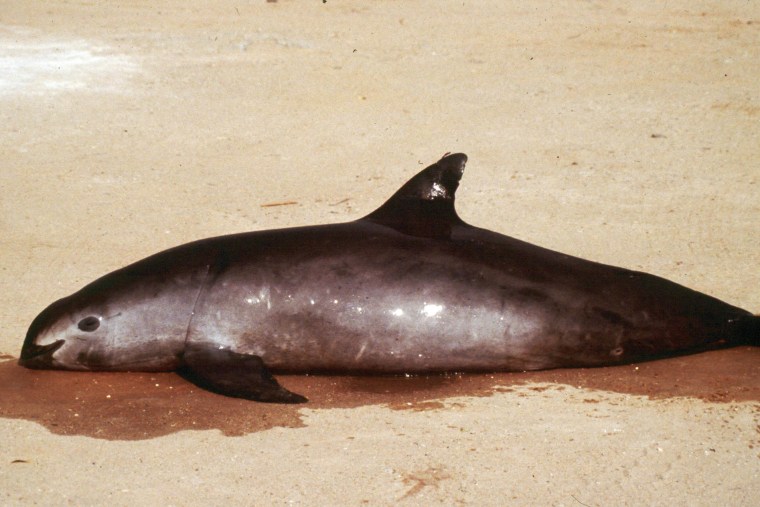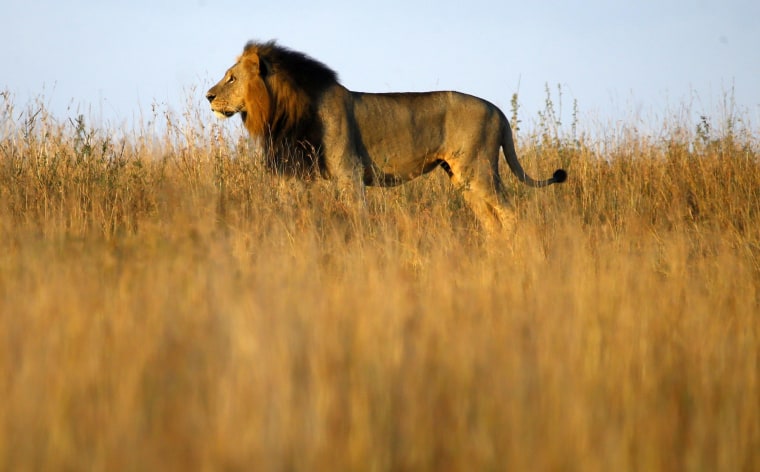Beyond 2015: Can World's Most Endangered Wildlife Survive?


Beyond 2015: Can World's Most Endangered Wildlife Survive?
Wildlife expert M. Sanjayan has traveed th world in search of answers. A Sri Lankan-born scientist, he hosts an upcoming PBS series that took him to 29 countries to explore mankind's connections to nature.
"I had set out on this journey," Sanjayan says, "to ask: 'On this planet of seven billion, is there still room for wild nature?'"
He and other wildlife experts surveyed by NBCNews.com on the state of the world's wildlife in 2015 agree: The short answer is yes, but there's no guarantee mankind will keep that space available.
And for many of Earth's iconic species think elephants, rhinos and tigers their fate passes through Southeast Asia, particularly China, where demand for animal parts has skyrocketed along with prosperity.
"You want to work in Asia in order to influence what's going on in Africa," notes Sanjayan, who visited both continents for "EARTH: A New Wild," which airs in February. "How Asia goes, so goes the world."
It's not just a few scientists, either, who are rattling their academic cages. Nations are meeting next March in Botswana to discuss wildlife conservation efforts, and the journal Nature, the pre-eminent source of peer-reviewed wildlife studies, ended 2014 with an editorial warning that mass extinction of species "lies somewhere in the future if nations keep to their present course."
Extinctions are part of nature hundreds of species die out each year and, with most, the effect on humans seems negligible. But the rate of extinctions is accelerating due to mankind's impacts, some of them deliberate and others accidental.
With so many species listed as endangered, it's impossible to single out a few as the closest to extinction. Instead experts provided a sampling that reflects how demand for rare animal parts can create extinctions starting with an animal most people have never even heard of.

Vaquita: Located solely in Mexico's Gulf of California, this small porpoise is nearly extinct because of China and good intentions gone bad, says Simon Stuart, chair of the Species Survival Commission at the International Union for Conservation of Nature and Natural Resources , the chief global entity that tracks species' conditions.
Turns out when China cracked down on domestic fishing of totoaba, a fish whose bladder is prized as a fertility treatment in traditional medicine, the species was sought out elsewhere, including the vaquita's home in the gulf. The totoaba bladder frenzy fishermen can get $5,000 a pound has led to the accidental killing of vaquita in fishing nets, and only 100 or so are estimated to be left.
"The market found an alternative in Mexico, in exactly the wrong place for the vaquita," says Stuart. The decline has yet to be reversed, even though international trade in the bladders is illegal and Mexico has tried to buy out fishermen and require safer nets.
Elephants and rhinos: Populations are still plummeting in parts of Asia and Africa because of demand for elephant tusks as ivory artwork and ground up rhino horns for traditional medicine. Some 600,000 elephants and 29,000 rhinos roam wild, but that's down from a few million elephants and 500,000 rhinos a century ago. The northern white rhino subspecies is down to five individuals after a recent death at the San Diego Zoo .
"If we can't save iconic animals that virtually everyone appreciates, then you wonder about other species," says Sanjayan, whose day job is senior scientist at Conservation International . Poaching is solvable with time, he feels, but providing adequate space for such large species "is a much bigger problem" in the long run.
 MARKO DJURICA / Reuters
MARKO DJURICA / Reuters Big cats: Lions, leopards and tigers "are in much worse shape than we thought," says Sanjayan. Tigers have it worst, with fewer than 3,200 left in the wild. The species "is disappearing alarmingly across much of its range and the main reason is poaching," says Richard Thomas, chief spokesman for TRAFFIC , the international agency funded by governments to track the illegal wildlife trade. Malaysia and Myanmar are of particular concern, he adds.
A new strategy for next year is to bring in experts from "the private security sector" to protect tiger refuges, says Andrea Heydlauff, a senior staffer at the conservation group Panthera . Those experts will provide "technology, law enforcement expertise, informant networks and lessons learned from the private sector."
In each of the examples, says Sanjayan, the cycle is this: "massive amounts of money, massive amounts of corruption, massive amounts of destruction."
"Corruption, that's the toughest nut to crack," adds Thomas, referring to government officials complicit in the illegal trade. "I don't think one single agency can address corruption alone. It needs to be a change in the mindset, a shift in culture."
The enormous profits have also attracted syndicates that can distribute animal parts quickly. "The illegal trade never had quite the linkage with organized crime that it now does," says Stuart.
Governments over the last few years have pledged to crack down, Thomas notes, so a key issue to address in 2015 is this: "What impact has all the high-level political support to address the global poaching crisis actually had? Have any of the measures adopted, agreed and spoken about had any measurable impact or has it all been empty words and promises?"
Sanjayan, for his part, remains optimistic, in large part because of what he perceives as real change in China.
China's own icon, the panda, is recovering after declines due to habitat destruction, and there's a chance that the first captive female returned to the wild will give birth next year for the first time in her natural habitat.
Moreover, Sanjayan's travels in China included time with well-to-do young Chinese. When speaking of the traditional value placed on rare animal parts, they would say, "Yeah, that's my parents' generation. I'm not into that."
That change might not come quick enough for the vaquita, but species with larger populations have a better chance.
"Here's my prediction for 2015," Sanjayan says. "You will see real leadership in China in curtailing elephant and rhino poaching."


"Here's my prediction for 2015," Sanjayan says. "You will see real leadership in China in curtailing elephant and rhino poaching." I sure hope so!
Let's hope that throughout 2015, things will change for the better.
Sadly, we humans don't seem to have any concern for the killing off of these beautiful creatures.
It's not only China, but most of Asia that are involved in it.
Let's hope that we, as humans, began to understand that everything is related.
Let's hope that 2015 will change people's habits and behaviors.
You stop the greed, you stop the killing.
You stop the greed, you stop the killing. That would definitely do it!!